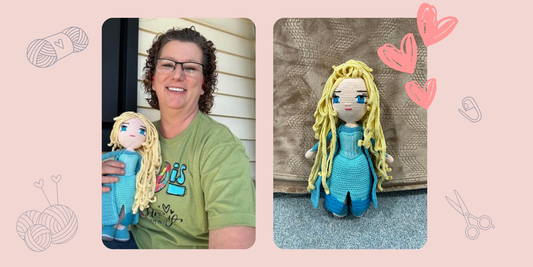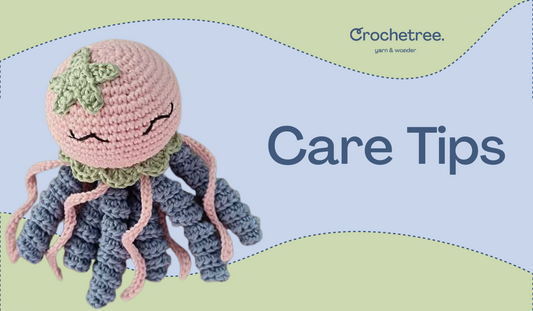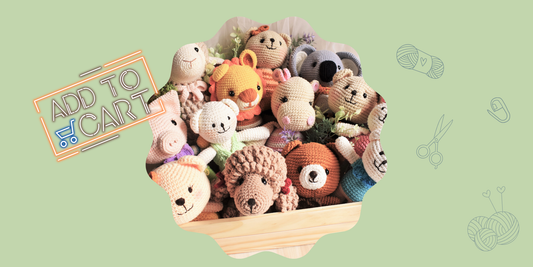Hand made crochet items can be great gifts. The thought and time put into each item shows the receiver how much we care. But if you’ve ever been on the receiving end of such a gift, you probably know that it can be hard to decide how best to take care of them. If that’s you, here are some tips to help clean your hand made crochet items. If you are the giver of such gifts, consider including washing instructions in the box so that the person getting your lovely present knows how best to handle it.
Know your fiber type
Regular wool
Regular wool is any type of fiber that comes from an animal. This could include sheep, goats, llama, alpaca, or even increasingly from rabbits. While the animals are all different, their fibers have something in common; they can be felted and they shrink. This is great if you want to do that intentionally, but if you want to preserve the life of your crocheted item, you will not want it felted. To prevent felting or shrinking, it is essential that you use cold water and you do not overagitate your item. Use only the amount of agitation needed to get your item clean.
Other Natural Fibers
Cotton, linen, bamboo, hemp or other fibers made from plants have a variety of characteristics. While they don’t felt like wool does, the fibers tend to be shorter. This means that with excessive wear and agitation, the fibers will “pill”, or form little balls on the surface of the fabric. They also tend to shrink in warm water. You should also wash items made with natural fibers gently in cold water.
Acrylic and other synthetic fibers
While acrylic is the most popular of the synthetic fibers, there are now a huge variety that include nylon, rayon, and even recycled plastic that is spun into fibers. These items are heat stable, do not shrink, and tend to be more durable than animal or plant-based fibers. You can wash these items in warm water and sometimes even with your regular laundry.
Pretreat stains or spills
Whether your item is made with natural or synthetic fiber, you can increase their life by treating stains and spots carefully. First, if the stain is dry (like from dirt) shake or lightly dry brush as much off as possible before adding water. If your fibers are synthetic, pretreat with whatever solution you usually use. However, if your items are natural fiber, you’ll need to be a little more careful. You can get many stains out with rubbing alcohol, white vinegar, mineral spirits (grease or sauce), peroxide (blood), or some combination of these liquids. See this article from Country Living for recipes to get stains out of wool.

Hand-wash or machine wash gentle
Once you have your spot problems taken care of, it’s time to wash the rest of the item if you wish. Some people just stop here and skip to drying without ever submerging the items completely. This is most likely for household good and stuffed items. Regardless of the type of item you are working with, you should wash it with as little agitation as possible. If you have garments or rugs made of synthetic fibers, you may want to group these together and wash them separately from other items that have hooks, buttons, zippers or other things that could snag them. If you have natural fibers, they should definitely be washed separately. This should be done either in a machine on gentle or by hand in a basin. Either way, use cold water.
Mild detergent
If you’re looking for a mild detergent that’s safe for your hand made crochet items, there are two major categories. Those are no-rinse or traditional rinse out detergent. Traditional gentle detergents like Woolite or Dreft Stage 1 are a budget friendly option that are suitable for a variety of materials. If you’re specifically washing wool and the item is fragile, you may want a no-rinse option such as Eucalan. That also has lanolin that helps soften and recondition worn fibers. Whatever detergent you use, you should always use the least amount necessary to clean your item.
Air-dry or low heat
Finally, a word on drying your item once it’s clean. Just as hot water can shrink your crocheted item, so can hot air. If you must dry it in the machine, use the low heat or fluff setting. Better yet is air-drying. While it takes more time, it allows you to carefully shape the item how it’s meant to be so that it doesn’t dry in an unintended way. Be careful as you shape that you don’t overstretch the fibers. They will be difficult to get back.
Hand made crochet can make wonderful gifts, in part because the time put into them shows the thoughtfulness of the person who made it. If you’ve received something hand made as a gift, be sure to treasure it by taking good care of it. If you’ve got stains or spills, use these tips to get them out, clean your item, and keep it looking as good as new for as long as possible.

















